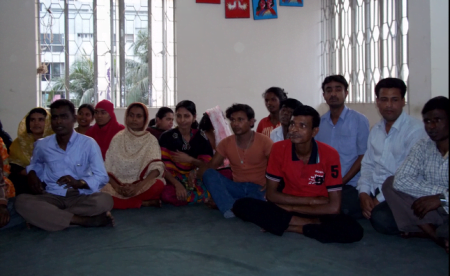Dhaka, Bangladesh – Interesting fact I learned today: HIV prevalence in Bangladesh is under 1%, which means it is about three times lower than in my hometown of Washington, D.C. According to government statistics, there were 2088 reported number of HIV cases last year, 850 AIDS cases and 241 deaths related to AIDS. About 7,500 people are living with HIV. Considering that this country has a population of 148 million, those figures are actually quite impressive.
Bangladesh got here, in part, because of the work of civil society groups and NGOs. I visited one of these groups today in Dhaka called the Ashar Alo Society (AAS), which roughly translates as Shining Light Society. To call this place an AIDS clinic is a bit of an understatement. It is a combination of a medical clinic, counseling and eduction center, and advocacy organization–founded and managed by people who live with HIV themselves. First line ART drugs are stored and dispensed; voluntary testing is administered; individuals with HIV can receive counseling from peers; HIV positive pregnant women give birth here; and weekly AIDS education courses are held in classrooms on the premises. The main center is in Dhaka, and there are AAS regional offices and community outreach centers in several other provinces. In all, nearly 1,000 people are serviced by AAS.
Relative to its neighbors Myanmar and India, Bangladesh has lower prevalence of HIV/AIDS. Still, some of the at risk populations are the same: like intravenous drug users, men who have sex with men, transgendered people and sex workers account for a disproportionate number of people living with HIV.
But there is also another group that is particularly at-risk: Bangladesh’s very large migrant worker population. These are men who go abroad seeking short term employment then return home to their families. AAS estimates that 60% of all new HIV cases stem from migrant workers who returned home. As of now, there is no real national strategy to target migrant workers. At the same time, the number of migrants is growing–last year half a million Bangladeshi’s went abroad for work. There is a real worry that if this group remains overlooked, the steady gains that Bangladesh has made in the fight against HIV/AIDS may become reversed.

